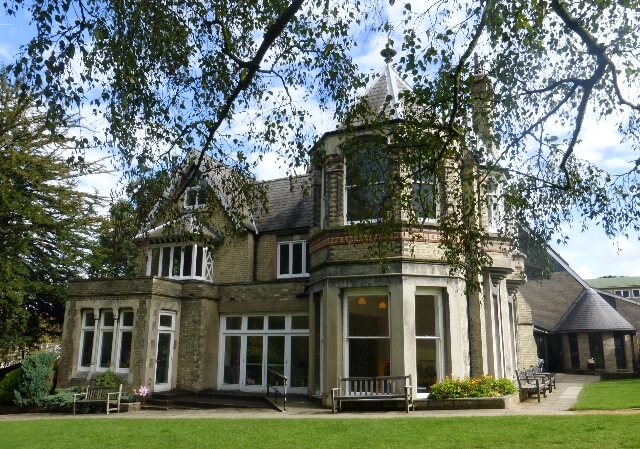Visitors discover a most unusual combination in Pages Lane: a modern church situated neatly between the mid-Victorian family house of North Bank and its stable block.
The house, dating from around 1860, was built as one of Muswell Hill’s numerous Victorian villas with estates. The imposing gateway, separate stable block and parts of the kitchen garden are still intact. North Bank continued in the Cooke family (carpet manufacturers from Yorkshire) from 1874 until bachelor son Samuel died in 1924. By this time almost all the other large villas had been flattened by Edwardian property developers in the early years of the centur
Fearing the same fate for the house during the inter-war years, neighbour Guy Chester bought the whole estate in 1924, kept the gardens as valuable green space and had the house refurbished in 1932 for use by the Methodist Church nearby and the local community. This role continued for the rest of the 20th century, by which time North Bank really was feeling its age – as well as needing to be made more accessible for greater usefulness.
Muswell Hill Methodist Church was founded in 1891; its first home was the wooden ‘Norwegian Chalet’, which had been part of the Alexandra Palace Exhibition. This era preceded Muswell Hill’s rapid growth around the turn of the century, during which several imposing new churches were built. Among these was the distinctive dark red brick Wesleyan Methodist Church on Colney Hatch Lane, at the corner with Alexandra Park Road. The main section was opened in 1899, with other parts and the Sunday School Hall being added shortly afterwards. With its foundation in the Wesleyan rather than the Primitive Methodist tradition, this church had features such as traditional stained glass, and a wrought iron screen in front of carved wooden choir stalls.
In the mid-1930’s, some additional stained glass windows were commissioned by Guy Chester. Eight unique pairs along the side walls linked faith with relevant action – so Bible stories were illustrated alongside images such as workmen digging, Donald Soper preaching in the open air, a father playing with a train set with his children, and medical aid work in Africa. In another unusual set designed for the big five-paneled West window, various aspects of creative expression were celebrated featuring a significant historical figure for each; with Christ in the central panel, the other four portray Beethoven composing music, Shakespeare writing poetry, Raphael at his easel, and Pasteur in his laboratory. In the early 1980’s, severe structural problems led to the decision to demolish the church on Colney Hatch Lane and sell the land.
The present church was opened in 1985 by George Thomas –Speaker of the House of Commons and also a Methodist local preacher. The architecture of the church is contemporary, but sympathetically echoes the Gothic style of North Bank which then officially became the ‘church hall’. Most of the 1930’s themed stained glass was re-set and used very imaginatively in the new church, and much of the fine organ was also transferred and rebuilt.
2007 is a special anniversary year for Methodists, with several notable dates being commemorated – including the bicentenary of the formation of the Primitive Methodists, the 75th anniversary of their union with the Wesleyan Methodists, and the tercentenary of the birth of the great hymn writer Charles Wesley, a most prolific hymn-writer. (His preacher brother John Wesley is portrayed in one of the stained glass windows – apparently undeterred when surrounded by a drunken mob brandishing bottles and even a frying pan!).

Also in 2007, North Bank, a domestic house for a genteel Victorian household was given a whole new lease of life, becoming a beautiful but sturdy centre for church and community for the 21st century. The layout and ambience of the house were preserved and enhanced, and in spite of massive unforeseen problems, North Bank opened again in the summer 2007. A lift made every level accessible – including a new attic lounge with views west over the gardens and north to Hertfordshire. North Bank is indeed a remarkable survivor from the Victorian era.
Image credits
Lesley Ramm